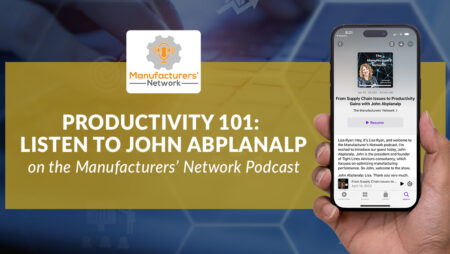
By John Abplanalp
In my previous article, “Rethinking the Purpose of a Corporation,” I wrote about how a business that lacks purpose experiences low productivity and remains vulnerable due to negative mechanisms and that, how in contrast, purpose-driven corporations achieve longevity through the implementation of positive workforce mechanisms.
The direct influence of employees in determining an organization’s purpose can be as much, and, sometimes even more of a reason for individuals to enthusiastically and wholeheartedly work at a company than the financial compensation they receive. Some might submit that it has become a matter of morality over money. But I would suggest that their point is both narrow and short-sighted. Rethinking purpose and once established, embedding it in a company’s culture to create an economically sustainable entity still involves the necessary foundational elements of income generation and capital accumulation, and it incorporates new and profound aspects that generate significant impact on a company’s productivity.
– A PROCESS BASED SOLUTION
Purpose is an organization’s aspirational reason for being, beyond profits alone. On a concentrated level, performance and productivity are inextricably linked when the objective is value creation. In optimizing the former to positively influence the latter, there exists a variety of viable options. Those that I’ve experienced as being operationally effective and predictably successful employ a well-structured, holistic evaluation and implementation system. One that I particularly favor, and that delivers sustainable results, forms the foundation of the Tight Lines Performance Accelerator, our patent-pending system that’s designed to help companies increase and maintain holistic, end-to-end productivity.
- ASSESSMENT
The initial phase is one of assessment in which the focus is placed on defining and examining problems. The actions of this process work to develop a baseline valuation of company in the macro, and the operations of each department in the micro. With this data collected and analyzed the company can establish projected improvement on gross margin and consideration of its impact on generating revenue, and most importantly, realizing healthy profitability.
- LAUNCHING A BOTTOM-TO-TOP REVIEW
The overarching objective is to clearly identify and begin the process of resolving key productivity obstacles by impact, type, and department. In establishing the corrective actions for each, stakeholders at all levels of the organization should be identified. Process drivers need to be defined and the corrective actions established, integrating the participants as valued contributors. Whether it’s a department head, a manager, an equipment operator, a technician, or whoever, their involvement and consensus are motivating factors in achieving systematic corrections starting at the most basic levels of operations and extending throughout the company.
- DIRECTING A TOP-TO-BOTTOM REASSESSMENT
All impediments to productivity, regardless of size or nature, require timely evaluation and action based on a priority ranking of the key performance drivers. As with Phase Two, teams will be established to accomplish these tasks and leadership roles and duties should be clearly set forth. Each group should be action-oriented in their approach and unified via a continuous improvement mindset.
A key outcome is the establishment of a collaborative environment in which team members and organizational stakeholders contribute to an improved outcome, achieving elevated skill sets and capabilities on both individual and organizational levels. Additionally, this affords management the opportunity to support, collaborate with, and empower the organization with the necessary tools and systems to achieve objectives and the projected outcome. (Most notably, ultimately, but not limited to, sustainable productivity and profitability improvement, and enhanced competitive position.)
- SET THE COURSE. STAYING THE COURSE
Of the numerous methods that have been developed to successfully pinpoint opportunities to help improve a business, I advocate for those that are lean and lend themselves to data-driven outcomes. The success of this approach lies in a continuous improvement business strategy that’s built on three main points:
- EFFICIENCY: Identifying, reducing, and/or eliminating whatever roadblocks inhibit the process and productivity.
- EVOLUTION: Dependent on incremental, constant development instead of one great leap forward.
- FEEDBACK: Core principles of the process that involve self-reflection and assessment.
When changes and ideas are coming from the bottom and rising to the top, from the workers, then those ideas are more aligned to the objectives and values of the purpose-driven organization and implemented much more easily. By affording employees input and ownership of the process, they’re more invested and motivated.
- RESETTING THE VISION
In this final phase, a company’s vision and long-term mission supporting achievements of newly developed capabilities are addressed.
As in the earlier phases, an oversight team would be assigned to identify future goals, assign responsibility for their implementation, and develop sustainable standards of operational performance that align with those objectives. The net effective of these actions results in greater efficiency, incremental growth, and improved profitability.
The true indicator of the success for all these efforts is a company’s bottom line. Productivity with profitability should always be regarded as “partners” and the top priority. Since value generation for all stake holders – including customers – is of paramount consideration, changes and improvements at all levels should be viewed in the context of revenue generation.
As the final stage is reached and with all productivity-related actions implemented for driving increased profitability, the company can now adjust its vision from a more tactical, survival one to a confident, more aggressive mindset. Questions that are top-of-mind at that point include, “How can we bring and apply this knowledge and experience to establishing businesses in new markets, new industries, and attracting new customer audiences”? With the confidence and knowledge gained, it’s no longer a giant leap to make a move into a complementary industry or business, it becomes a smaller and much easier step.
Check out my most recent article, “Rethinking the Purpose of a Corporation,” here.




